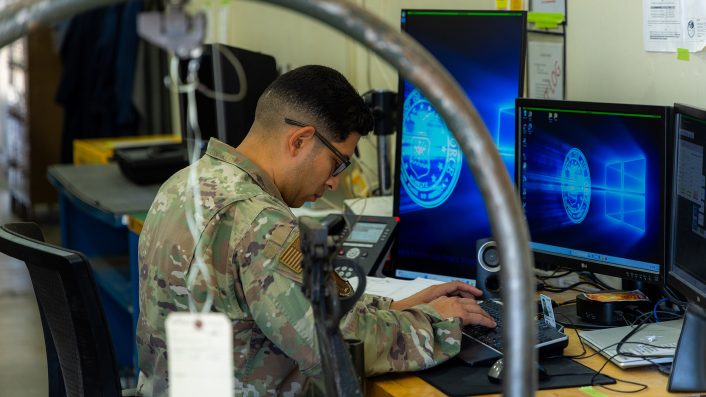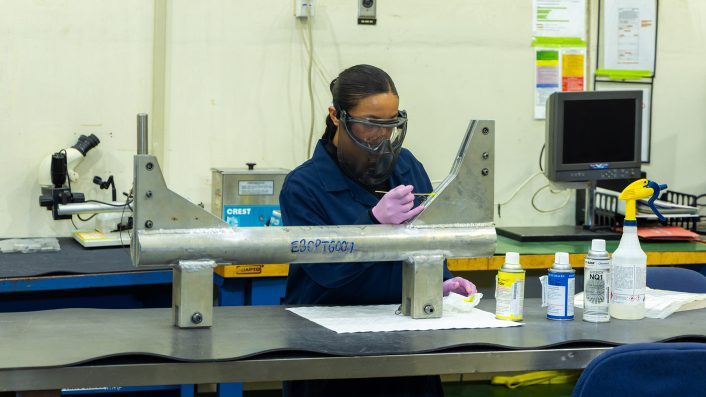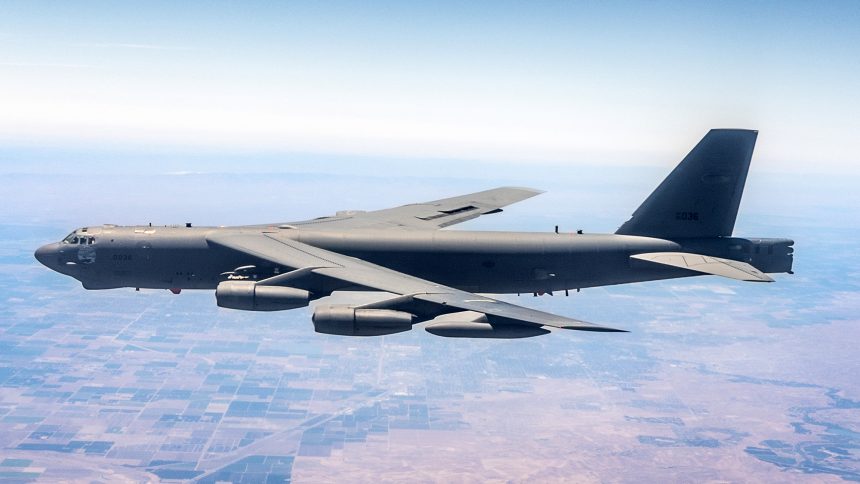Inside the rapid B-52 X-Ray inspection that saved 17 days and boosted confidence in the 70-year-old bomber.
In late June 2025, the U.S. Air Force’s 412th Test Wing shared that its Non-Destructive Inspection (NDI) team had completed a major inspection on a B-52 Stratofortress a full 17 days ahead of schedule. The milestone marked the first time in nearly two decades that a B-52 underwent such an in-depth x-ray inspection at Edwards Air Force Base. The rapid turnaround not only helped bring the iconic bomber back to readiness faster than planned, but also offered a glimpse into how modern diagnostic tools and agile processes are being used to extend the operational life of platforms like the B-52.
According to the official release, the inspection primarily focused on the aircraft’s flap tracks. These components experience high stress during flight operations, and any hidden structural flaws could severely affect safety and performance. Through digital x-ray technology and streamlined logistics, the Edwards NDI team was able to complete their assessment well ahead of the 35-day window originally allocated by the Aircraft Maintenance Unit (AMU).

To learn more about the significance of this effort, The Aviationist reached out for more context. Below are the responses to our exclusive Q&A with the NDI team at Edwards AFB provided by Mary Kozaitis Chief, Media Operations 412th Test Wing / USAF OL Plant 42.
Q. What NDI technologies or tools were used (e.g., phased-array ultrasound, digital X-ray), and how do they compare to traditional inspection methods?
Digital x-ray was utilized. By performing digital x-ray, we cut processing time by 60% and eliminated the need for hazardous waste of about 50 gallons. Additionally, the film can be utilized up to 500 times as opposed to traditional film. Finally, since the files are stored digitally, we don’t have to use up facility floor space by storing hard copy film in shelves.
Q. The article mentions completing the inspection 17 days ahead of schedule: how long does the inspection usually take? How often are these inspections typically done for a B-52?
The Aircraft Maintenance Unit allocated 35 days to complete this task. The NDI team completed market research and expedited procurement of certain consumables they didn’t have on hand, allowing them to start ahead of schedule. This is the first X-ray of this magnitude and of the B-52 in 18 years at Edwards AFB. It’s difficult to gauge what is the typical completion timeframe, however, because the team shifted to digital film as opposed to traditional, it saved many duty days. To elaborate on this point, there are certain densities needed to deem an image acceptable for interpretation. Because of this being computed radiography, the team was able to control the densities and contrast whereas with traditional, if one factor is off such as time, energy, temperate, etc., it would require a reshoot. This would significantly extend the completion time.
Q. From a structural integrity standpoint, how much life extension or increased confidence does a successful NDI provide for such an old airframe?
The main job is to observe and report. Since the team didn’t discover any fractures, the owning unit can feel confident in putting it back into flying service or perform additional maintenance action. If the team did discover something, the owning unit takes the findings and perform action according to technical orders or engineer dispositions.
Q. Were any critical flaws or anomalies discovered during the inspection? If so, how significant were they, and what corrective actions were taken?
Thankfully, none were discovered.
Q. What follow-up steps are in place post-inspection (additional repairs, monitoring, or flight validation tests)?
Since they didn’t find anything, there is no follow up.
Q. How does this inspection align with the broader B-52 Structural Integrity Program?
This inspection gives the AMU and the pilots the confidence that at a minimum, those flap tracks are serviceable.
Q. Is this accelerated inspection model something that could be replicated at other bases, or is it unique to Edwards and the 412th Test Wing’s capabilities?
Yes, it can be replicated. However, bases that own the B-52 only perform B-52 inspections. Here at Edwards, the NDI lab is charged with knowing all the platforms assigned to the 412th Test Wing (which are many)! This is important to note because these NDI inspectors must stay current and proficient with each and every airframe.
Q. Can you provide some details about NDIs conducted on other types?
At the 412th Test Wing, the team regularly performs phase inspections that consist of ultrasound, eddy current, and x-ray on the T-38. We perform various inspections on the F-16 during its phase as well. F-35 and F-22 request our assistance often. If there are any miscellaneous inspections requested from another unit, we’ll respond accordingly. In the words of SSgt Brandon Tate, “there’s never a dull moment” at Edwards NDI.

With no critical flaws detected and flight readiness restored, the B-52 involved in this accelerated inspection is once again mission capable. This result stands as a testament to the longevity and adaptability of the Stratofortress. As we recently reported, the aircraft marked the 73rd anniversary of its first flight earlier this year and is expected to remain operational into the 2050s as the B-52J, thanks to major upgrades to its engines, radar, avionics, and crew configuration. The BUFF (Big Ugly Fat Fellow) continues to demonstrate that it is not just a relic of the Cold War, but a modernized pillar of long-range strike and strategic deterrence.
Special thanks to Mary Kozaitis, Chief of Media Operations, 412th Test Wing / USAF OL Plant 42, for her invaluable support in the preparation of this story and for facilitating access to the detailed information provided by the NDI team at Edwards AFB.









